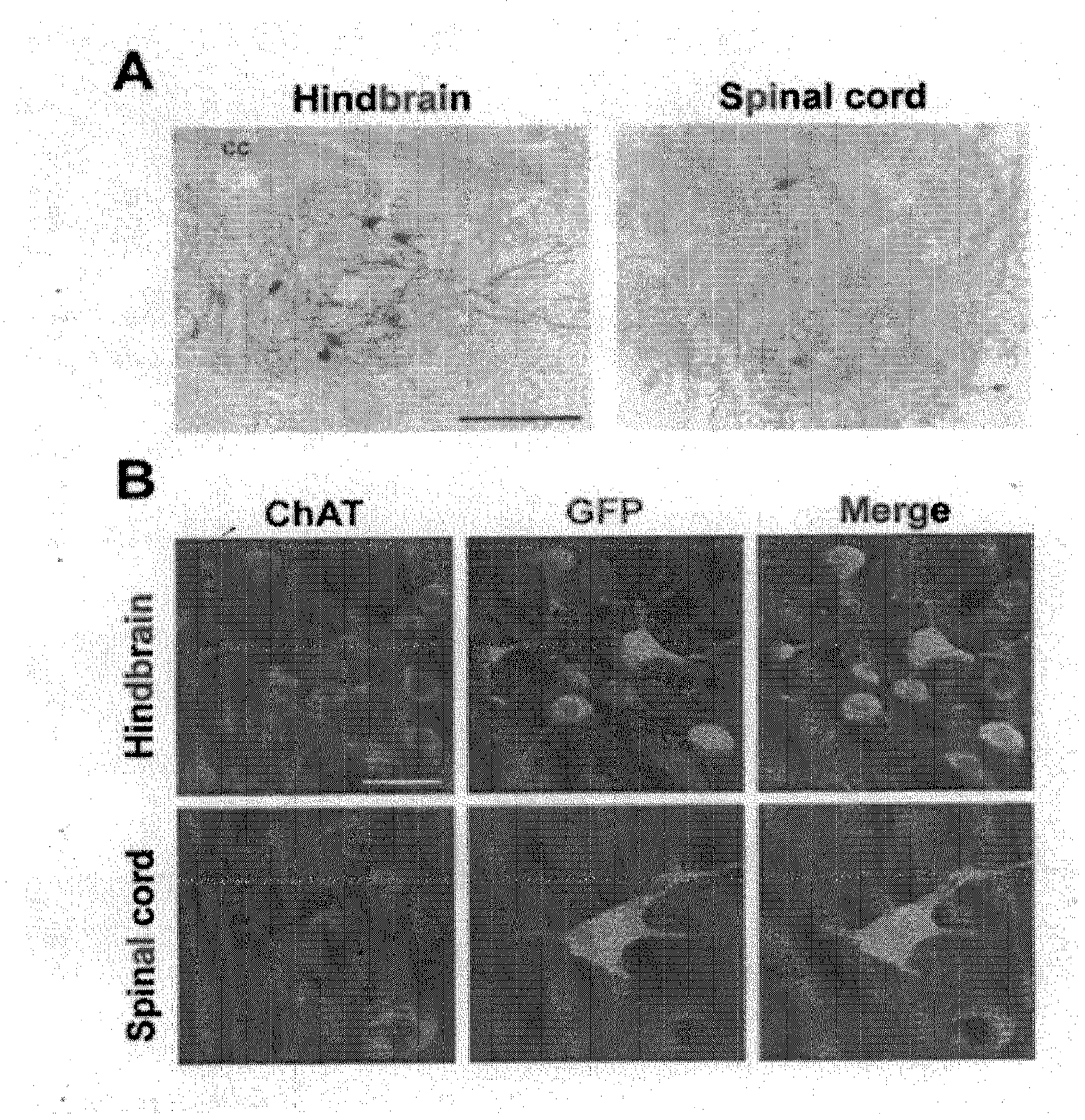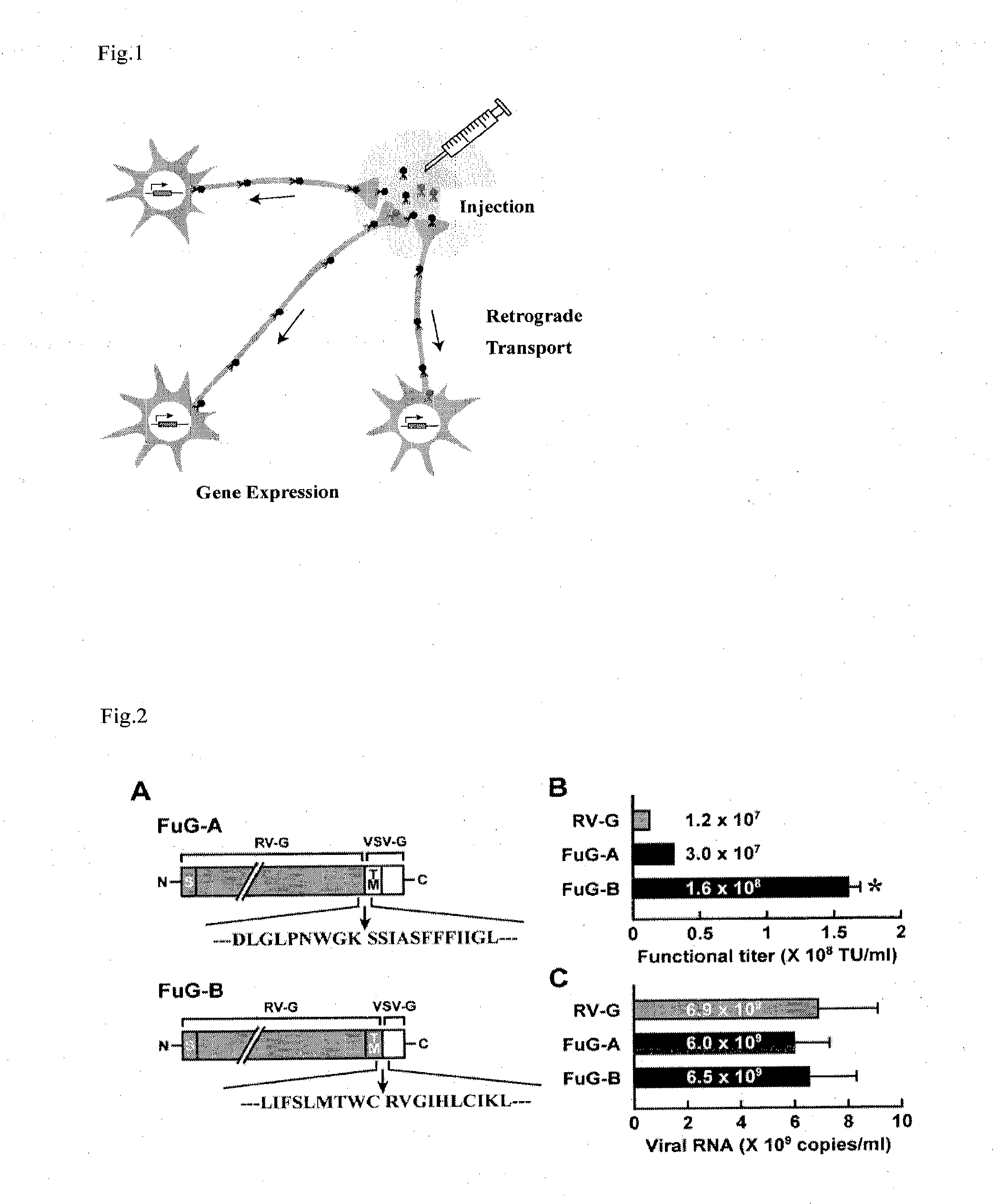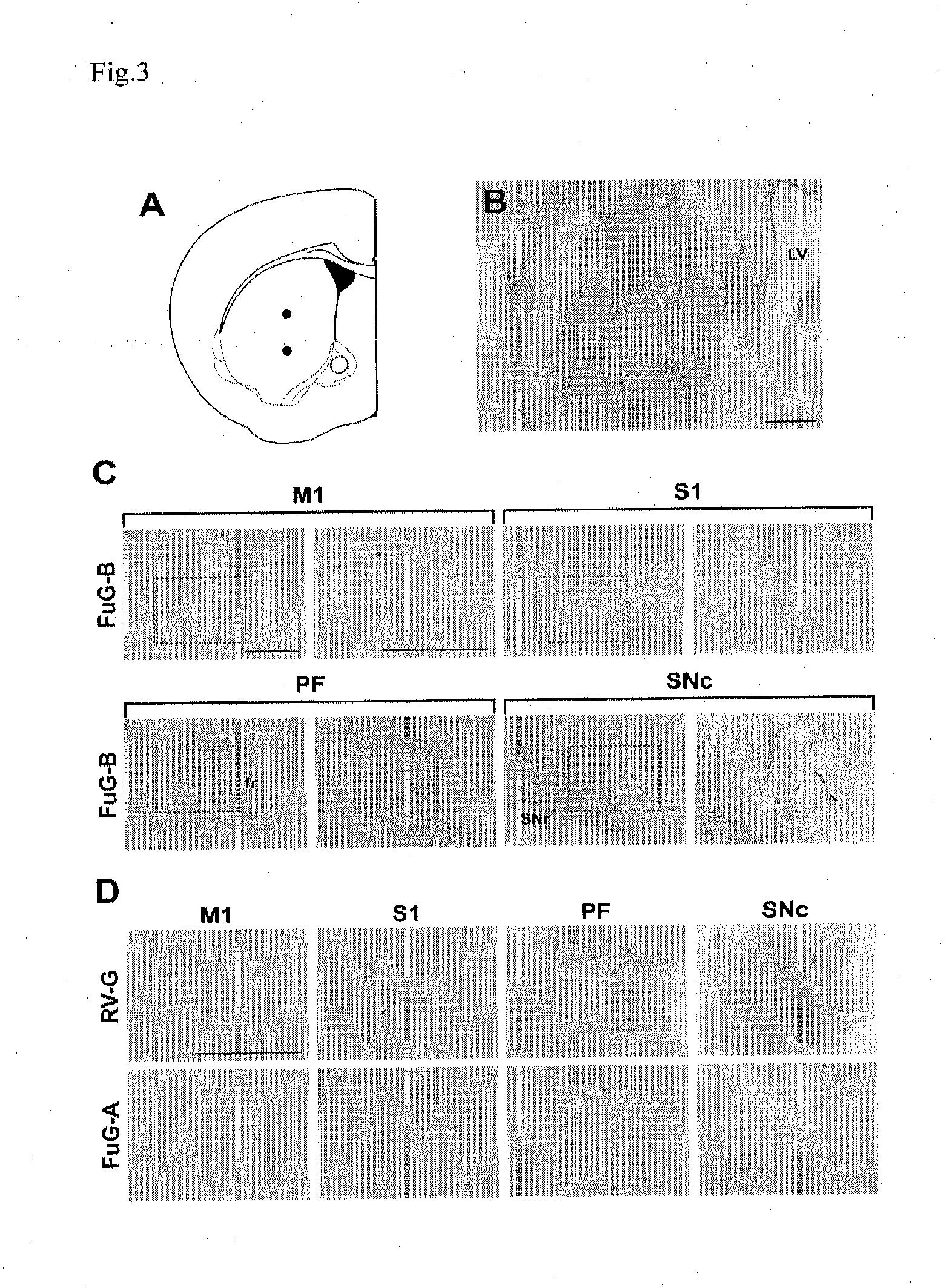Retrograde transport viral vector system having envelope comprising fused glycoprotein
- Summary
- Abstract
- Description
- Claims
- Application Information
AI Technical Summary
Benefits of technology
Problems solved by technology
Method used
Image
Examples
examples
Preparing a Viral Vector
[0071]A viral vector according to the present invention was prepared using a HIV-1 vector system developed by Dr. Arthur Nienhuis at St. Jude Children's Research Hospital. Namely, a packaging plasmid containing the gag and pol gene (pCAGkGP1.1R), a packaging plasmid containing an accessories gene (pCAG4-RTR2) and a transfer plasmid containing a green fluorescence protein (GFP) as a target gene (pCL20 c-MSCV-GFP) were used. As an envelope plasmid, a vector containing a base sequence (SEQ ID NO 1) encoding an envelope was produced according to the conventional method, wherein the envelope is a fused polypeptide (FuG-B) in which an intracellular domain from VSV-G was linked to an extracellular domain and a transmembrane domain of the RV-G gene, which was provided by Dr. Kinjiro Morimoto at National Institute of Infectious Diseases (FIG. 2A, lower panel). Similarly, a vector containing a base sequence (SEQ ID NO 1) encoding an envelope was produced, wherein the e...
example 2
Introducing a Viral Vector into a Mouse Brain
[0074]Animal care and use was performed according to a guideline by the animal care and use committee of Fukushima Medical University.
[0075]A 12-week old mouse (C57BL / 6J) was anesthetized with pentobarbital sodium (50 mg / kg, i.p.), and a solution containing a vector produced as described above (1.2×1010 copies / ml) was injected in the brain (striatum) of the mouse using a brain stereotaxic apparatus. The injection was performed according to the mouse brain atlas (PAXINOS, G, and FRANKLIN, K. B. J. (2001). The Mouse Brain in Stereotaxic Coordinates, 2nd edn. (Academic Press, San Diego). FIG. 3A shows that 2 μl of the solution was injected (0.1 μl / min) at two points along the track respectively in the dorsal region of striatum through a glass microinjection capillary connected to a microinjection pump. Anteroposterior, mediolateral and dorsoventral coordinates from bregma were 0.50, 2.00 and 2.50 / 3.25 (mm), respectively.
[0076]Three weeks aft...
example 3
[0078]In order to analyze the effects of vector titers on the efficiency of retrograde gene transfer, the FuG-B vectors having various titers (3.0×108 to 2.4×109 TU / ml) were injected into striatum in a similar manner as in Example 2. The expression of the transgene was then analyzed by the immunostaining method using anti-GFP antibody in primary motor cortex (M1), primary somatosensory cortex (S1), parafascicular nucleus of thalamus (PF) and substantia nigra pars compacta (SNc). Positive cells in each of the brain regions were counted (FIG. 4). The results showed that, in the four brain regions, the number of positive cells was significantly increased as the vector titer was increased. These results showed that the efficiency of retrograde gene transfer was dependent on the vector titer.
PUM
| Property | Measurement | Unit |
|---|---|---|
| Cell angle | aaaaa | aaaaa |
| Frequency | aaaaa | aaaaa |
Abstract
Description
Claims
Application Information
 Login to View More
Login to View More - R&D
- Intellectual Property
- Life Sciences
- Materials
- Tech Scout
- Unparalleled Data Quality
- Higher Quality Content
- 60% Fewer Hallucinations
Browse by: Latest US Patents, China's latest patents, Technical Efficacy Thesaurus, Application Domain, Technology Topic, Popular Technical Reports.
© 2025 PatSnap. All rights reserved.Legal|Privacy policy|Modern Slavery Act Transparency Statement|Sitemap|About US| Contact US: help@patsnap.com



